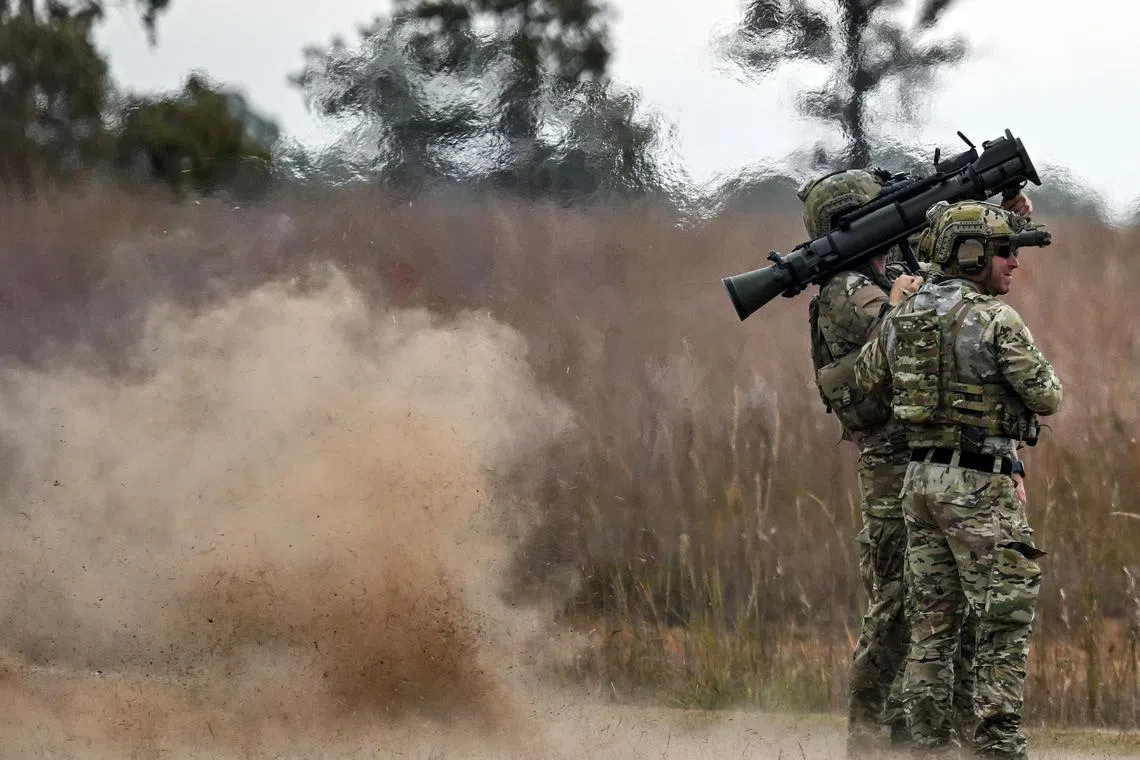Despite rising demand, arms sales hampered by production woes, says Stockholm study
Sign up now: Get ST's newsletters delivered to your inbox

The United States saw a 7.9 per cent decrease in arms revenues.
PHOTO: NYTIMES
Follow topic:
Stockholm – Even with the war in Ukraine fuelling demand,
The sales of weapons and military services by the 100 largest arms companies in the world totalled US$597 billion (S$796.4 billion) in 2022, a decrease of 3.5 per cent compared with 2021, according to a new report by the Stockholm International Peace Research Institute (Sipri).
At the same time, geopolitical tensions coupled with Russia’s invasion of Ukraine fuelled increased demand for weapons and military equipment.
Dr Diego Lopes da Silva, a senior researcher at Sipri, told AFP that in this context the slowdown in revenue was “unexpected”.
“What the decrease really shows is that there is a time lag between a demand shock like the war in Ukraine and the ability of companies to scale up production and really meet that demand,” he said.
According to Sipri, the decline was in large part due to diminished revenues among major arms-makers in the United States, where manufacturers struggled with “supply chain issues and labour shortages” stemming from the Covid-19 pandemic.
The US alone saw a 7.9 per cent decrease, but still made up for 51 per cent of total arms revenue in 2022, with 42 companies among the world’s top 100.
Complex weapons
US arms suppliers are particularly vulnerable to supply chain disruptions as many of the weapon systems they produce are more complex.
“That means that the supply chain is also more complex, and it has more parts, which means it’s more vulnerable,” Dr Lopes da Silva said.
Russian arms-makers also saw revenues drop significantly in the report, falling by 12 per cent to US$20.8 billion.
The decline was in part due to sanctions imposed on Russia over Ukraine, but Dr Lopes da Silva also noted that lower revenues could also be the result of delayed payments from the Russian state.
In addition, the transparency of arms-makers in Russia has diminished, and only two Russian companies were included in the top 100 “due to a lack of available data”, according to Sipri.
In contrast, in other parts of the world such as the Middle East and Asia and Oceania, weapon-makers producing less complicated systems were able to respond to the increased demand.
The Middle East in fact saw the biggest increase of any region by percentage, growing 11 per cent to reach US$17.9 billion.
Turkish companies in particular saw an increase, with Baykar – which produces an unmanned drone widely used in Ukraine –
Surging demand
The combined revenue for arms suppliers in Asia and Oceania rose by 3.1 per cent, reaching US$134 billion in 2022.
China, which after the US represented the second-largest supplier by country, saw its eight arms companies in the ranking increase their combined revenues by 2.7 per cent, reaching US$108 billion.
Looking forward, Dr Lopes da Silva said there were no signs of demand slowing down.
“In the company reports, something very interesting that we found is that the order intake and the backlogs of the companies, they are increasing by a lot,” he told AFP.
Added to that, many European countries have pledged increased military spending targets in the wake of Russia’s invasion of Ukraine, with some targets reaching all the way to 2030.
“We’re seeing that this demand will continue for the years to come. So we expect military spending to continue to increase and consequently arms revenues,” Dr Lopes da Silva said. AFP

